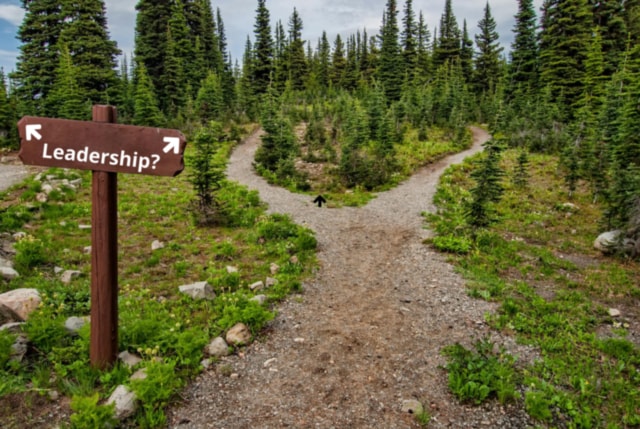Cohering Community
Liberate Leadership!
Leadership, as we’ve long known it, is at a crossroads. The old playbook—built on command, control, and certainty—is fraying in a world that’s volatile, interconnected, and hungry for meaning. At its evolutionary edge, a new form of leadership is emerging: one that liberates rather than confines, ignites rather than directs, and empowers rather than dominates. Call it "liberating leadership"—a paradigm where leaders free themselves from outdated constraints and, in turn, free others to step into their own power. This isn’t just a tweak to the status quo; it’s a radical reimagining of what it means to lead. So, what’s driving this leap? What must we release to embrace it? And what possibilities await on the other side?

The Evolutionary Edge of Leadership
At its core, liberating leadership inverts the traditional model. Instead of leaders standing atop a hierarchy, wielding authority to achieve outcomes, they become catalysts—sparks that ignite others to lead. This isn’t leadership as a solo act but as a communal dance, where the goal is to cultivate a field of shared agency. It’s a shift from "I lead" to "We lead," where the leader’s success is measured not by their own achievements but by the flourishing of those they serve.

Thought leaders have hinted at this edge for decades. Robert Greenleaf’s "servant leadership" (1970) planted a seed, proposing that true leaders prioritize others’ growth, asking, “Do those served become healthier, wiser, freer?” Frederic Laloux, in Reinventing Organizations (2014), describes "Teal" organizations where self-management replaces rigid hierarchies, suggesting leadership can evolve beyond control into a distributed force. Otto Scharmer’s "Theory U" (2009) adds depth, urging leaders to operate from "presencing"—a state of deep listening and co-creation with the emerging future. Liberating leadership builds on these foundations, pushing further: it’s not just about serving or decentralizing—it’s about freeing leadership itself from its old skin to become a living, adaptive process.
This evolutionary edge is mature, not in age but in consciousness. It demands leaders who are self-aware, humble, and curious—qualities that traditional models often sidelined in favor of decisiveness and charisma. It’s leadership that thrives in complexity, not by mastering it but by dancing with it, trusting that collective wisdom outstrips any single vision.
Beliefs, Assumptions, and Worldviews to Transform
To embrace this liberated form, we must first confront the old paradigms that chain leadership to the past. These are the unspoken beliefs, assumptions, and worldviews that have defined "leading" for centuries—many of which no longer serve us. Here’s what needs examination, shifting, or outright transformation:
1. Control as the Leader’s Duty
- Old Belief: Leaders must control outcomes, people, and systems to succeed.
- Shift Needed: Liberation comes from trust—not in controlling the river but in trusting its flow. The assumption that leaders are the sole architects of results stifles innovation and agency in others. Transforming this means letting go of micromanagement and embracing uncertainty as a creative force, trusting that others can steer when given space.
2. Ego as the Leader’s Crown
- Old Belief: Leadership is about personal prowess—being the smartest, strongest, or most visible.
- Shift Needed: Replace ego with humility. The heroic leader myth—think of the lone CEO or battlefield general—elevates one above many, but liberating leadership sees power in the collective. It’s not about shining brightest but about lighting others’ flames. As Lao Tzu said, “A leader is best when people barely know he exists… when his work is done, they will say: we did it ourselves.”
3. Certainty as the Leader’s Currency
- Old Belief: Leaders must project unshakable confidence and provide all the answers.
- Shift Needed: Swap certainty for curiosity. In a world of rapid change, pretending to know it all is a liability. Liberating leadership thrives on questions—“What’s possible here?” “What do you see?”—fostering a culture where learning trumps knowing. Scharmer’s call to “lead from the emerging future” hinges on this openness to what’s unfolding, not what’s already fixed.
4. Hierarchy as the Leader’s Structure
- Old Belief: Leadership is positional, flowing downward from the top.
- Shift Needed: Flatten the pyramid into a web. The hierarchical worldview assumes authority resides in titles, but liberating leadership distributes it across networks. Laloux’s Teal model shows this in action—self-organizing teams where leadership emerges organically. It’s less about who’s above and more about who’s alongside.
5. Isolation as the Leader’s Burden
- Old Belief: Leaders bear responsibility alone, standing apart to solve problems.
- Shift Needed: Move from isolation to connection. The lone genius trope isolates leaders from the very people they serve, but liberation lies in community. It’s about co-leading, where vulnerability—like admitting “I don’t have this figured out”—builds trust and invites collaboration.
6. Duty as the Leader’s Yoke
- Old Belief: Leadership is a heavy obligation, a mantle of sacrifice.
- Shift Needed: Reframe duty as permission. The old paradigm casts leaders as Atlas, shouldering the world, but liberating leadership asks, “What if it’s lighter?” It grants permission—to oneself to shed burdens, to others to step up—turning obligation into a choice to empower.
These shifts aren’t cosmetic; they’re seismic. They demand we dismantle the scaffolding of industrial-age leadership—built for efficiency and predictability—and rebuild it for adaptability and humanity. The old worldview saw leadership as a scarce resource, hoarded by the few; the new sees it as abundant, unleashed in the many.
What’s Fueling This Evolutionary Leap?
This isn’t a random mutation—it’s a response to forces reshaping our world. Several currents are propelling leadership toward this liberated edge:
- Complexity and Interconnection: Global challenges—climate change, technological disruption, social upheaval—defy single-leader solutions. They require collectives where leadership flows fluidly, as no one person can grasp the whole. Liberating leadership meets this by empowering diverse voices to co-navigate.
- A Hunger for Meaning: People crave purpose over paychecks. Gallup’s 2023 workplace report shows only 32% of employees feel engaged—traditional leadership’s focus on output leaves souls starving. Liberating leadership feeds this hunger by fostering growth and agency, aligning with Viktor Frankl’s insight that meaning, not success, drives us.
- Cultural Awakening: Movements for equity, inclusion, and mental health challenge old power dynamics. They demand leadership that listens, not lectures—freeing it from elitism to embrace all. This echoes Greenleaf’s servant ethos but pushes it toward universal empowerment.
- Technological Amplification: Digital tools democratize influence—anyone can lead a movement from a smartphone. This flattens hierarchies, forcing leadership to evolve from gatekeeping to amplifying. Liberating leadership harnesses this, turning leaders into connectors, not controllers.
- Inner Transformation: A quiet revolution in consciousness—mindfulness, spirituality, self-awareness—is reshaping how we lead. Practices like meditation or Scharmer’s "presencing" shift leaders inward, liberating them from reactive patterns to act from clarity and compassion.
These forces aren’t gentle nudges; they’re tidal waves. They’re dismantling the old guard and fueling a leadership that’s less about ruling and more about releasing—releasing potential, creativity, and shared destiny.
Possibilities in Its Wake
What happens when we liberate leadership? The horizon glitters with possibility:
- Collective Flourishing: When leaders focus on igniting others, organizations become ecosystems of growth. Teams self-organize, innovate freely, and adapt swiftly—think of Laloux’s Teal companies like Buurtzorg, where nurses lead without bosses, delivering better care.
- Resilient Communities: Liberated leadership builds resilience by distributing power. In crises, no single point fails because everyone’s empowered to act—imagine neighborhoods responding to disasters with shared leadership, not waiting for orders.
- Healing Divides: By prioritizing curiosity and connection over certainty and control, this leadership bridges chasms—political, cultural, generational. It turns “us vs. them” into “we,” fostering dialogue where all lead toward common ground.
- Personal Liberation: Leaders themselves find freedom. Unshackled from ego and duty, they lead lightly—more like Lao Tzu’s invisible guide than a burdened titan. This joy ripples outward, inspiring others to liberate their own leadership.
- A New Cultural Narrative: As this spreads, leadership ceases to be a pedestal and becomes a shared gift. Society redefines success not as climbing ladders but as lifting others—a legacy of empowerment over domination.
These aren’t utopian dreams; they’re already flickering in corners—coops, grassroots movements, agile teams. Liberating leadership scales these sparks into a blaze, reimagining power as a force that multiplies when shared.
The Call to Liberate
So, let’s liberate leadership. It starts with us—examining our own assumptions, shedding the old skin of control, and stepping into curiosity and trust. It means giving ourselves permission to lead differently and granting it to others, too. The edge is here, fueled by a world crying for connection and meaning. The old paradigms are cracking; the new possibilities are vast.
As Greenleaf asked, “Will they say, ‘We did it ourselves’?” That’s the test of liberated leadership—not how high we climb, but how many are free to soar. Let’s lead not to rule, but to release. The future isn’t waiting—it’s asking us to leap.
If you want to experience, explore and build your capacities on the edges of this new leadership paradigm, join us in the Liberating Leadership Lab!